Israel at war: What happened on days 42-43?
IDF deepens activity in Gaza's Al-Shifa hospital, agrees to evacuate civilians • Israel won't accept ceasefire in Gaza without mass release of hostages


WATCH: IDF strikes Hezbollah after rocket barrage launched at Israel
The Iran-backed Hezbollah said it shot down an Israeli drone near the border in the early hours of Saturday.
Rocket sirens sounded across northern Israeli border towns on Saturday morning after a barrage of at least 25 rockets was fired from Lebanon, the IDF confirmed.
The Israeli military said it was striking the source of the fire, as well as several Hezbollah terror positions across the border.
Sirens also sounded in the northern city of Kiryat Shmona later on Saturday. The IDF said it responded to the rocket fire.
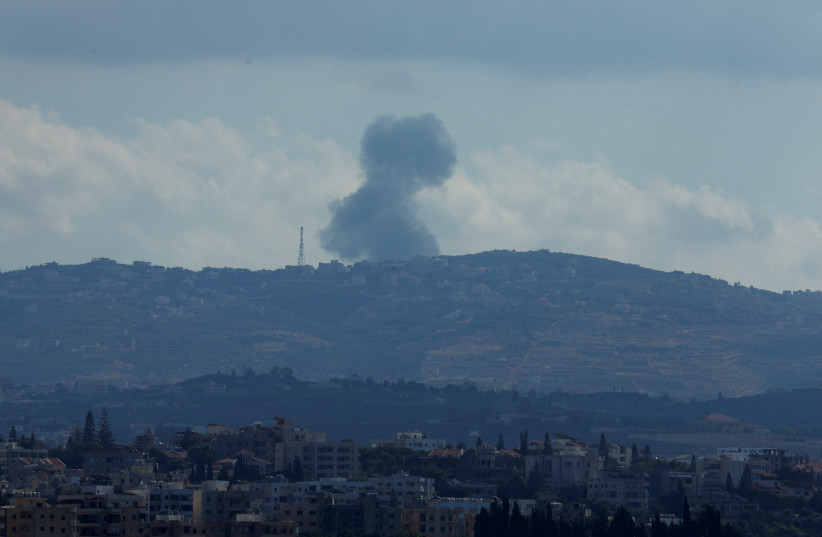
Hezbollah says it shot down Israeli drone
The Iran-backed Hezbollah said it shot down an Israeli drone near the border in the early hours of Saturday.
Lebanese officials said an Israeli airstrike hit a building in an industrial area near the town of Nabatieh, one of the deepest Israeli strikes inside Lebanese territory since fighting resumed last month. The Israeli military did not immediately comment on the incident.
Go to the full article >>Surgeon flees Gaza City's last functioning hospital after anaesthetics run out
Gaza's Hamas-run health ministry said that as of Nov. 16 only nine of the enclave's 35 hospitals were functioning even partially.
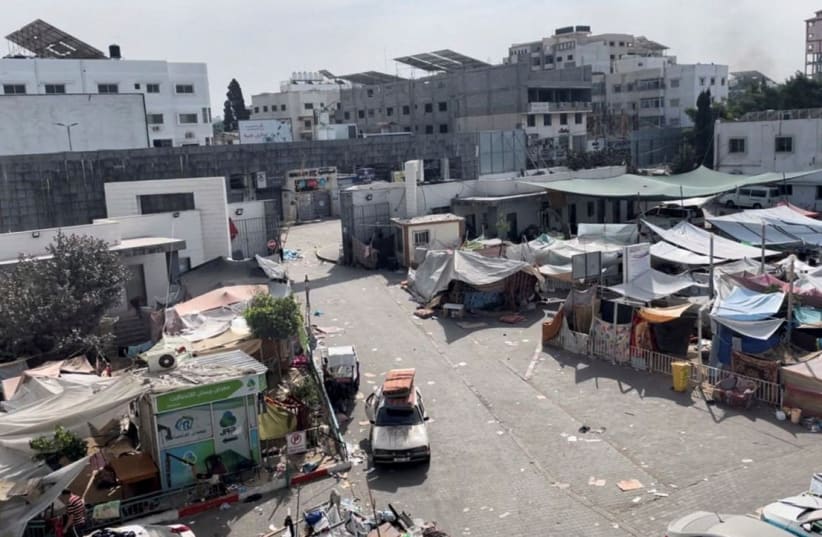
Hundreds of patients desperately needed his help, but now there was nothing he could do.
With Al Ahli hospital shaking from Israeli tank fire and no more anaesthetics left to operate, British-Palestinian surgeon Ghassan Abu Sitta told his team it was time to leave the last fully functioning hospital in Gaza City.
"It has been a living nightmare - leaving 500 wounded knowing that there's nothing left for you to be able to do for them, it's just the most heartbreaking thing I ever had to do," Abu Sitta told Reuters on Friday, a day after leaving the hospital and walking to Nuseirat refugee camp in central Gaza.
Go to the full article >>From Hamas to Harvard: Israeli satirist exposes insane depths of ‘inclusivity’
“I was expecting him to hang up really early in the conversation and he just didn’t … I had to add worse and worse questions and he just went with it.”

Amid the sharply rising reports of antisemitism in the West, particularly on college campuses, a now-viral prank call to Harvard University’s admissions office seeks to answer the question: “At what point does ‘Diversity, Equity, and Inclusion’ go too far—effectively inviting the wolf into the henhouse?”
The answer (for Harvard) seems to be: “never.”
“I just want to emphasize again, that it’s a real call. A lot of people asked if it was a sketch or staged,” says satirist and journalist Racheli Rottner, speaking with The Media Line. Rottner came up with the concept, voiced the call, and animated it in what’s become her signature minimalist style, for Israeli news site Mako where she works. The animation was posted on YouTube.
In the recorded conversation, Rottner poses as “Jamaa,” who calls on behalf of her Hamas terrorist son “Hameed,” in hopes of securing financial aid for his ‘deeds’ ahead of the coming registration period.
“Following the publications about Hamas-supporting students at Harvard University, we called to find out if it was possible to get a massacre scholarship,” Rottner said.
Go to the full article >>Israeli gov't demands change to war cabinet as fuel tankers sent to Gaza
Smotrich, outraged by the decision, stated that he wanted to make drastic changes to the war cabinet.
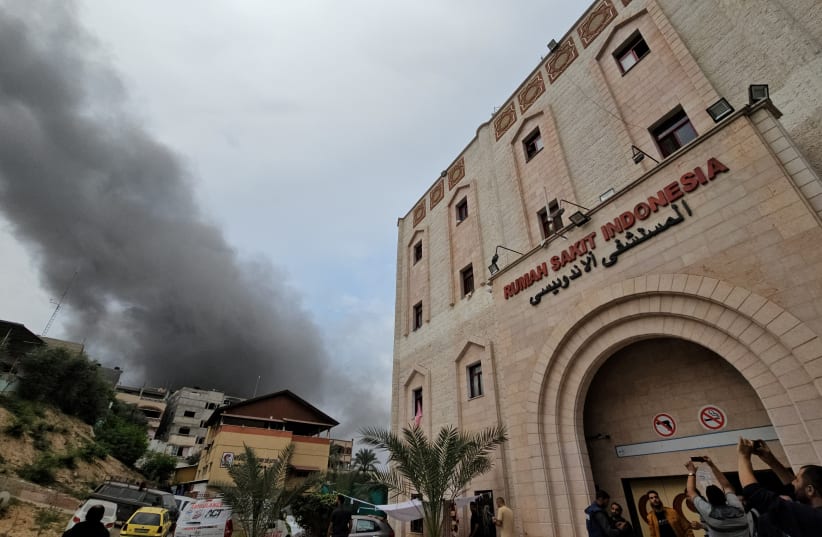
Israel's war cabinet unanimously approved a joint recommendation by the IDF and the Israel Security Service (Shin Bet) on Friday to allow the entry of two diesel tankers a day for the needs of the UN to support water and sewer infrastructure.
This decision was made following a request by the US.
The tankers will pass through the Rafah crossing to the UN's control in the southern Gaza Strip.
Smotrich demands change to the war cabinet
Finance Minister Bezalel Smotrich sent a letter to Netanyahu, voicing his dismay at the decision, and stated that members of the war cabinet must be altered to include the head of each faction in the coalition.
Smotrich wrote that the war cabinet's actions were "unacceptable" and called on Netanyahu to stop the transfer as soon as possible. He further said that the decision "spits in the face of the IDF soldiers, the hostages and their families, and the bereaved families. It is also contrary to the decision of the political-security cabinet and therefore is illegal. This is not how you win a war, this is not how you destroy Hamas, and this is how we will not return the hostages.
Go to the full article >>Pope Francis to meet relatives of Israeli hostages next week - source
The Vatican has been vocal in calling for the release of all hostages as well as a ceasefire.

Pope Francis will meet next week with relatives of Israeli hostages held by Hamas militants in Gaza, a source said on Friday.
The source spoke to Reuters as the Vatican's number two, Cardinal Pietro Parolin, said the Holy See believed their release and a ceasefire - which Israel has so far ruled out - were two "fundamental points" to resolve the crisis.
The source, who spoke on the condition of anonymity because he was not authorized to discuss papal plans, told Reuters 12 relatives would meet the pope early on Wednesday morning before his general audience.
Go to the full article >>Israel's government in crisis over transfer of fuel into Gaza
Israel's war cabinet must be altered to include the head of each faction in the coalition, Finance Minister Bezalel Smotrich demanded in a letter to Prime Minister Benjamin Netanyahu on Friday after the war cabinet approved a transfer of two fuel tankers to the Gaza Strip.
Smotrich wrote that the war cabinet's actions were "unacceptable" and called on Netanyahu to stop the transfer as soon as possible.
This is a developing story.
Go to the full article >>Pope to meet relatives of Israeli hostages next week - source

Pope Francis will meet next week with relatives of Israeli hostages held by Hamas militants in Gaza, a source said on Friday.
The source spoke to Reuters as the Vatican's number two, Cardinal Pietro Parolin, said the Holy See believed their release and a ceasefire - which Israel has so far ruled out - were two "fundamental points" to resolve the crisis.
Go to the full article >>Israel's war cabinet approves entry of two fuel tankers per day into Gaza

Israel's war cabinet unanimously approved a joint recommendation by the IDF and the Israel Security Service (Shin Bet) to allow the entry of two diesel tankers a day for the needs of the UN to support water and sewer infrastructure. This followed a request by the US.
The tankers will pass through the Rafah crossing to the UN's control in the southern Gaza Strip.
Go to the full article >>Hostage Emily Hand turns 9 years old in Hamas captivity
Young girl from Be'eri was kidnapped from friend's sleepover on Oct. 7, initially thought killed

Emily Hand, a young girl who was kidnapped by Hamas terrorists during the October 7 massacre and brought to Gaza, then initially falsely reported as having been killed, turned 9 years old on Friday while in captivity in Gaza.
The young girl, who possesses Irish and Israeli citizenship, was abducted from a sleepover at her friend's house in Kibbutz Be'eri, along with her friend's mother, Raya Rotem.
Initial reports from the IDF seemed to confirm the worst - she was reported as one of the dead. However, her father said at the time that he was comforted by a sense of relief that she was not suffering among the over 240 hostages taken to Gaza by Hamas. Weeks later, he learned that this was, in fact, her fate, as her body had not been found and an eyewitness reported seeing her being taken away in a Hamas vehicle.
"Unofficial reports came in that she was found dead in the kibbutz," said Emily's father, Tom Hand, who is now living in a hotel on the Dead Sea with others evacuated from Be'eri. "I was relieved. I was relieved that she was dead and it was all over, it would have been pretty quick."
Tom Hand, a 64-year-old Irish immigrant who came to Be'eri in 1992 as a 32-year-old volunteer, worked as a printer in the kibbutz, where he met Emily's mother Liat.
View this post on Instagram
Liat died when Emily was just two-and-a-half years old, but the family had remained in the kibbutz where Hand's first wife Narkis also lived. She was among the about 100 murdered residents on October 7 - 10% of the community's population.
More than 100 people were killed in Kibbutz Be'eri over more than 24 hours. Many were shot with their families or found dead with their hands bound. Rescue workers said some were burned alive. He had been at home and the gunmen never reached his house.
"You try to imagine the, the best, you know. You hope that it was quick," Hand said. "Crazy thought, for a parent to say but, yeah, it was a relief thinking that she wasn't in Gaza."
"So now I know she is in Gaza and she's alive. She's going to be nine in the tunnels," he said. "She won't even know it's her birthday. She'll have no idea of night or day or time."
"There'll be no birthday party, no birthday cake, no friends around. But you know, yeah. Now we hope, now we pray."
Beyonce, Disney: 'I've got to give her fun'
Since the October 7 attack, Israel has attacked the Gaza Strip in a campaign that Hamas says has killed more than 11,000 people and launched a ground operation to destroy Hamas. The government and military have vowed to bring as many hostages back as possible.
Now that Hand has learned that Emily was alive, he said he had been forced into a complete mental shift to think: "OK, we're going to get her back, we're going to get her back. We're going to get them all back."
He said Emily was a fan of the American singer Beyonce and he focused on staying strong enough to bring her home and thinking of ways to bring her enjoyment.
"I'll make sure I'll get her to the next Beyonce concert. Bring her to Disney World, I'll spend all my money, every penny I've got to give her fun to make up for everything that she's lost and everything she's going through," he said, fighting tears. "I'm going to give her the world."
Rumors and reports of Israel and Hamas closing in on a deal to free some of the hostages in exchange for the release of some female and teenage Palestinians held in Israeli prisons have intensified this week, though the hostages' families are still left waiting for their miracle.
"We're all waiting for her," he said. "We know we're going to get you back. Be strong every day and wait, we're coming to get you. We're coming to get you home. We're going to bring you home."
Reuters contributed to this report.
Go to the full article >>Israel's modern warfare: How IDF tech closes the loop on terrorists
Modern warfare provides commanders with more access to technology, enabling strike cells to coordinate fire against terror targets.
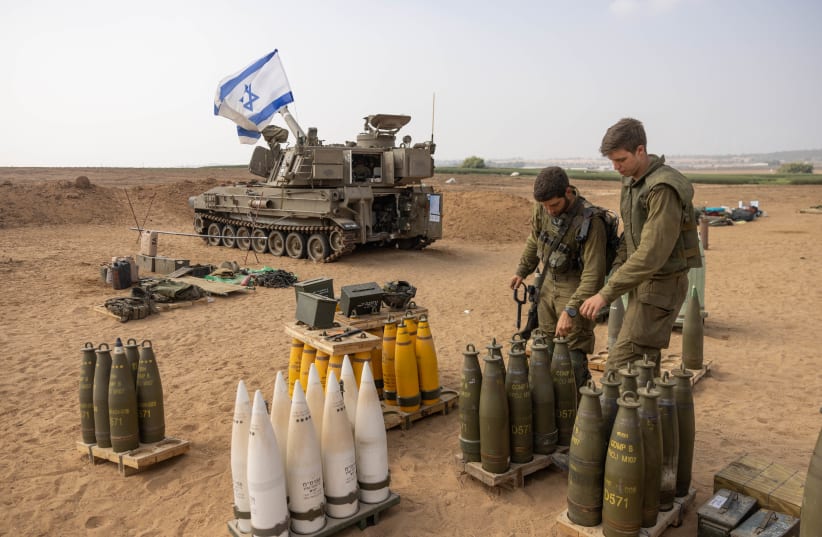
It has been more than a month of war against Hamas in Gaza. After weeks of an Air Force campaign to bomb and eliminate terrorists and terror infrastructure, Israel launched a ground campaign in late October. Three divisions moved into various parts of Gaza. One of them, the 36th, was tasked with helping encircle Gaza City, essentially cutting it off from southern Gaza.
In this battle, the IDF used tanks, artillery, armored vehicles, infantry, the air force, and navy ships, with a huge amount of firepower available for operations. However, harnessing all this power is complex. In the olden days, this would have been a difficult or impossible task. Artillery units would soften up enemy positions, naval guns would pound the shore, and air force units would obliterate areas, using bombs. It might be coordinated, but it would rely on a ham-handed approach, like a giant crashing through a forest. Today, the IDF is all about precision, not mass.
The operations center of the 282nd Fire Brigade is where all this comes together. A fire brigade is essentially a unit that coordinates strikes, or “fire,” at enemy positions. The 282nd is part of the 36th Division. It has its own strike cells, which are made up of soldiers in various rooms who have access to computers and communications so they can knit together all the resources at their disposal to bring fire down on threats.
IDF strike cells target Hamas in Gaza
I drove down to an IDF base several miles from Gaza to speak with a commander of one of the strike cells that is helping soldiers clear threats in Gaza today. Maj. G. is all we can say about his name. In civilian life, he’s an entrepreneur. He’s been working with an IDF strike cell for 15 years. This means constant updates over the years in reserves in terms of the technology and systems employed. He served in operations Cast Lead and Protective Edge.
“There are several strike cells in the division. The purpose is to support the maneuvering forces. We perform strikes ahead of the forces so they face minimum friction and to protect them on the flanks when they go in,” he says. The current IDF concept of the strike cell began during Protective Edge, but it built upon methods used before to coordinate artillery, air force, and ground forces units. Protective Edge was a 50-day war in Gaza that also involved limited ground operations but was less extensive than today.
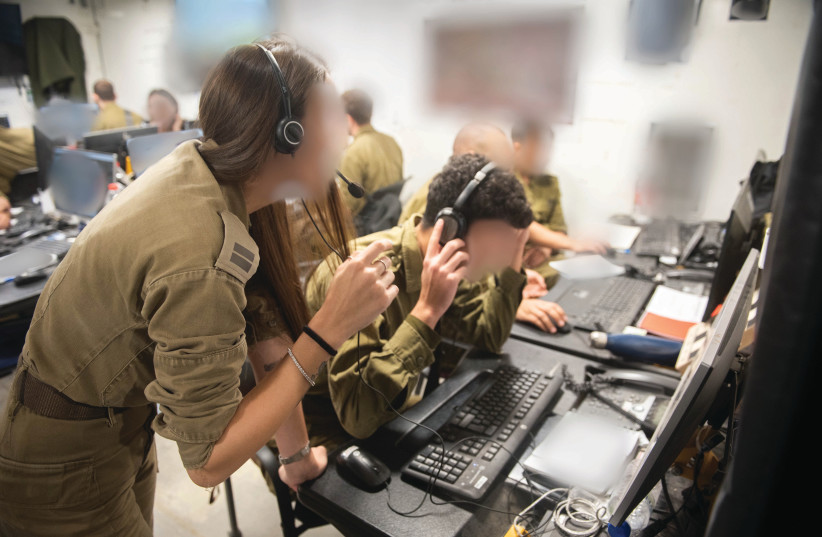
“There has always been wonderful collaboration between artillery, drone, air force, and navy [units] – any kind of armament that needs to be deployed to protect troops. There was always a body in charge of performing the strikes on behalf of the division,” says Maj. G. Today, the strike cells help support the whole division’s maneuver. That means supporting the tanks and infantry within the 36th. The 36th is nicknamed the “rage division” – it packs a punch in battle with two armored brigades and several Golani infantry battalions. This is the unit you send when you want to send a message to an enemy.
G. was called up on October 7 like 300,000 other people, to meet the Hamas threat after the brutal massacre that day. He went to the 36th Division’s headquarters and began preparing. The concept of his strike cell is to support the various units of the division on the ground. This means “to perform strikes to reduce friction so there is minimal contact with the enemy, finding the targets, and performing a triage for the targets and understanding how impactful they are.” Essentially, this means using sensors from various units to find threats and to destroy them so that the ground forces rarely have to face tough battles in Gaza. The strike cell has a target bank it compiles as time goes on, and it chooses the current ammunition to destroy each target. “We are a target destruction factory,” says the officer. They also have access to all sorts of intelligence to find these targets, from intercepted signals to people on the ground. The targets could include individual terrorists or a building or vehicles.
“What we do is we are focused on the troops on the ground, anything that can harm and affect maneuverability. We work with the navy and air force and allocate the right way to destroy targets and make sure troops go there safely and maintain an eye on collateral damage,” the major says. This also involves strict adherence to the rules of war. He sketches this out as applying international law, Israeli military regulations, and “internal protocols” when fighting in Gaza. “We may see a terrorist in a building, and we do everything in our power to minimize damage,” he says. What this means is that the goal is to harm the terrorist but not destroy the building, for instance. The IDF today has a plethora of smart munitions that it can use, from the Iron Sting mortars to the IDF FireFly loitering munition, a hand-held drone that looks like a flying stick. And the IDF is always acquiring new types of munitions that are more precise.
The need to have a strike cell and fire operations center became clear in the wake of the 2006 Lebanon War. During that war, the IDF had trouble coordinating units. Like today’s war in Gaza, it also relied on the air force in the beginning to crush the enemy. When that didn’t work, the big army was sent in. The colossus then spent days thrashing around in Lebanon but had difficulty coming to grips with Hezbollah. The lesson from that campaign was a need for more coordination and to close the “loop” on enemies. What that means is that the time it takes to neutralize the enemy can be reduced from when the threat is identified.
“This is not about finding a target that is remote but about [finding] the right target and timing, and to strike a certain target and not another. Sometimes we eliminate the target in hours and sometimes minutes before forces get there, and sometimes they ask us and we destroy targets right in front of them.” In this campaign, there has been a lot of focus on this precision.
On November 5, for instance, the IDF said, “Two uninvolved Gazan children were identified by the IDF within the striking range of an Islamic Jihad terror target in the Gaza Strip. Following the identification, the aircraft held fire and aborted the strike.” In another incident, Chief of Staff Lt.-Gen. Herzi Halevi praised the air force for using an F-35 from the 140th Squadron to strike a target 200 meters away from an IDF ground unit. “We haven’t done this before, with very heavy armament. [It was] very good communication between what the force needs and what the jet knows to provide, and this connection of air and ground together, we always knew it was strong, [but] we see that it is much stronger than we thought,” he said on November 6.
Maj. G. points to new technology that enables better command and control and also enables sifting through all the intelligence and data gathered on the modern battlefields. The goal here is efficiency and time. This was also a key element of Israel’s Momentum plan over the last several years, to bring more digitization to the IDF and knit together units, the way civilian smart phones knit together apps and data.
IN PRACTICE, the strike cell that G. is involved with has destroyed 1,000 targets. There are different strike cells in charge of different types of targets. Destroying targets is called “closing the loop,” which means the loop from the sensor that sees the threat to the shooter that destroys it. A sniper team could close this loop on its own. But in modern wars, it’s all about using one set of eyes or sensors to see a threat and dialing in some other system to neutralize the threat. Think of a drone seeing a man with an RPG and an artillery unit 10 miles away striking that RPG team so that an IDF APC that is driving down the road is not affected.
“Closing a loop can take minutes, depending on the types of targets and the ammunition. This is effective in terms of moving targets and small targets. It became more effective with better understanding,” says Maj. G. The IDF says that since the ground invasion began, IAF aircraft and ground forces “have conducted 4,300 strikes, struck hundreds of anti-tank missile launch posts, approximately 300 tunnel shafts, approximately 3,000 terrorist infrastructure sites, including over 100 structures rigged with explosives, and hundreds of Hamas command and control centers.” On November 13, around 200 targets were struck, “including terrorist operatives, weapon production sites, anti-tank missile launchers, and operational command centers.”
There are a lot of challenges in Gaza. Maj. G says the enemy hides in civilian areas, in mosques, and hospitals. “We know they use shelters and UN locations and diplomatic sites and so on. It’s hard to strike from afar without causing collateral damage. There is no way to eliminate Hamas without going in with troops; we can cause damage and kill a lot of the enemy in our actions; but since they are entwined with civilian society, it’s hard to eliminate [the terrorists] entirely,” he says.
The goal of the unit is to minimize harm to IDF troops. The strike cell sees the big picture. Troops in Gaza may just see the road ahead of them, but the strike cell can get a sense of all the events taking place in the vicinity. “We have all this intel and air force support, to analyze and do surgically targeted strikes. It’s supporting troops and making sure it’s more effective against an enemy that is hiding inside civilian infrastructure.”
Gaza is separated into sectors for the strike cells. The operational area of the 36th Division includes a certain region, but not everything that happens in Gaza near this area relates to the work of the unit. For instance, rockets being launched targeting Israeli cities might not be the main priority of the 36th Division; the air force or other units may deal with suppressing the rocket fire. Each strike cell or fire unit has the targets and geography that it focuses on. The goal here for this unit of the 36th is to reduce friction with the enemy. In essence, the less the army has tanks and infantry shooting at terrorists and them shooting back, the less damage is done to the civilian areas. “Making sure each target is handled correctly” is the priority. “We are aware of the situation that there are civilians, we know some evacuated and some didn’t. We put a lot of effort in the strike cell to make sure the collateral damage is minimized and prioritize the troops and civilians.”
There are also other issues to contend with. The IDF has opened a humanitarian corridor on Salah al-Din Street running south of Gaza City toward the southern part of the Gaza Strip. This is to enable civilians to flee. The IDF has paused operations during the day in some sectors to enable this to happen. There are also tunnels under the city. Combat engineers and other units have to deal with this threat and dismantle them.
The goal of the strike cell is to take all the information possible and process it correctly, and then feed it back into the loop so that targets are destroyed. But the information also has to be examined to make sure that all the technology is feeding the operators the right data and that it’s being analyzed correctly. “Everything is laser-focused on the purpose and having as little distraction with less personnel,” the officer says. The personnel are called up for frequent training to keep up with the technology and to understand new user interfaces, for instance. “We get exposed to new tech that is evolving, and in the war you perfect your techniques because you can’t predict what the enemy is doing, and new tools emerge to solve problems,” he says. They also give feedback on the technology. A lot of this technology is developed by Israel’s big three defense companies – Elbit Systems; Rafael Advanced Defense Systems; and IAI.
“We learned to operate with the systems; we got the end results. If it’s a new sensor, I need to know how fast I got the indication and accuracy; I need to know what can affect it or give me false identification.... We use sensors on the ground, air, and sea... Each is tuned for different activities,” he says. The operators also have to understand the munitions they use. They need to understand the capabilities and level of destruction and how to prioritize targets and also use the right system to address the target. And some munitions are more common than others. “If I have three types of missiles and they will all be as effective, then I will choose the most abundant.” This matters because big wars such as the one in Ukraine have gobbled up shells, such as 155 mm. shells. Israel has been importing a lot of military equipment on ships and cargo planes since the war began. With Israel conducting thousands of strikes, a lot of weapons are being used.
I ask the major if perhaps Israel sometimes overdoes it in terms of strikes, hitting terrorist infrastructure that might have been identified visually but in fact is an empty shack a terrorist used an hour prior. “It’s above my pay grade,” he responds. “Are we being more efficient? I can’t say in terms of airstrikes, but the strike cell is more efficient, and closing loops in a matter of minutes is not simple for any military. And since we are there with all this experience and supportive [structure], we can do this in almost no time,” he says. This means the IDF is efficient and accurate and is using the right munitions, he says.
There is a constant need for lessons learned in this battle. “The decision-maker is the strike cell commander, who authorizes fires and must act on discretion,” he says. “If you trust the system too much, you lose sight of the goal,” he explains.
What this means is getting the advantages out of the system without losing sight of the objective. You need to understand how the enemy works. And you have to use the technology responsibly.
“We’ll see how effective we were. When I’m going back to base after a 12-hour shift and troops see minimal resistance, then I know we had an impactful 12 hours and we did a lot of impact, which is the most important thing,” says Maj. G.
Go to the full article >>Israel-Hamas War: What you need to know
- Hamas launched a barrage of rockets on October 7, with thousands of terrorists infiltrating from the Gaza border
- Over 1,200 Israelis and foreign nationals were murdered as of Tuesday, and more than 5,431 were wounded according to the Health Ministry
- IDF: 239 families of Israeli captives in Gaza have been contacted, 30 of them children